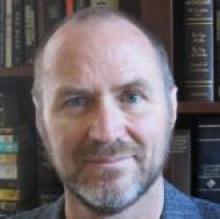Institute for Telecommunication Sciences
Visit ITS's Main Website.
The Institute for Telecommunication Sciences (ITS), located in Boulder, Colorado, is the research and engineering arm of NTIA. ITS provides core telecommunications research and engineering services to promote:
- Enhanced domestic competition and new technology deployment
- Advanced telecommunications and information services
- More efficient use of the radio frequency spectrum
ITS also serves as a principal Federal resource for investigating the telecommunications challenges of other Federal agencies, state and local governments, private corporations and associations, and international organizations. In particular, this includes assisting Federal public safety agencies, the FCC, and agencies that use Federal spectrum. Current areas of focus include:
- Research, development, testing, and evaluation to foster nationwide first-responder communications interoperability
- Test and Demonstration Networks to facilitate accelerated development of standards for emerging communications devices
- Analysis and resolution of interference issues
ITS Director: David Goldstein
David's email
Contact
Institute for Telecommunication Sciences
325 Broadway, MC ITS.D
Boulder, CO 80305–3337
(303) 497–3571
ITSInfo
Related content
ITS Releases Key Software Model to Boost Collaborative Spectrum-Sharing Research
Evolving and improving the science behind spectrum sharing is essential to NTIA’s commitment to delivering the spectrum needed to support innovation, power next-generation technologies and ensure that federal agencies can execute their spectrum-dependent missions.
Understanding the characteristics of radio waves, especially how far they propagate and how they interact with structures and the environment, is important in planning and operating wireless systems. Any agreement to share spectrum bands will require reliable predictions of how that spectrum will perform in the real world.
The Institute for Telecommunication Sciences (ITS) recently took a major step toward a more collaborative approach to research in this area by publicly releasing an advanced software model for radio wave propagation in urban environments. This software can be used by consumers, engineers, scientists and others to explore the behavior of radio waves interacting with buildings, trees, and other environmental features.
ITS released the software to the public by publishing source code on GitHub, an online platform for open-source code. Posting to GitHub will allow researchers to use and modify the code as they wish, as well as collaborate with other researchers and avoid duplicating efforts. ITS hopes that making its source code freely available can advance development of widely accepted propagation models.
Notice of Workshop on Tactical Encryption and Key Management
The Institute for Telecommunication Sciences (ITS) of the National Telecommunications and Information Administration (NTIA), U.S. Department of Commerce, will host a two-day workshop on Tactical Encryption and Key Management. The goal of the workshop is to identify solutions to the problem of how to dynamically key and re-key different groups with varying levels of access and for varying lengths of time using existing infrastructure or over an ad hoc network that is reliable and user friendly. The workshop will be held on February 15-16, 2017, from 8:00 a.m.
Understanding Spectrum Clutter—It’s Not About Neatness!
 Merriam-Webster defines clutter first as “a crowded or confused mass or collection,” and then as “interfering radar echoes caused by reflection from objects (as on the ground) other than the target.” As we work to make the most efficient use of the radio spectrum, including by sharing it, we need to better understand how radio spectrum interacts with real world environments, not just in a lab, in order to predict when and where interference might occur. Imagine painting rings around a particular source showing how far out the signal is likely to travel and cause possible interference to other sources – the better our understanding of how the spectrum operates in various environments the narrower the “brush” we can use to paint those lines. This means there will be less geography that must be protected against possible interference.
Merriam-Webster defines clutter first as “a crowded or confused mass or collection,” and then as “interfering radar echoes caused by reflection from objects (as on the ground) other than the target.” As we work to make the most efficient use of the radio spectrum, including by sharing it, we need to better understand how radio spectrum interacts with real world environments, not just in a lab, in order to predict when and where interference might occur. Imagine painting rings around a particular source showing how far out the signal is likely to travel and cause possible interference to other sources – the better our understanding of how the spectrum operates in various environments the narrower the “brush” we can use to paint those lines. This means there will be less geography that must be protected against possible interference.
One key issue that needs to be studied in more detail is “clutter,” which consists of environmental features such as buildings, other structures, and vegetation that cause signal loss due to scattering and absorption.
